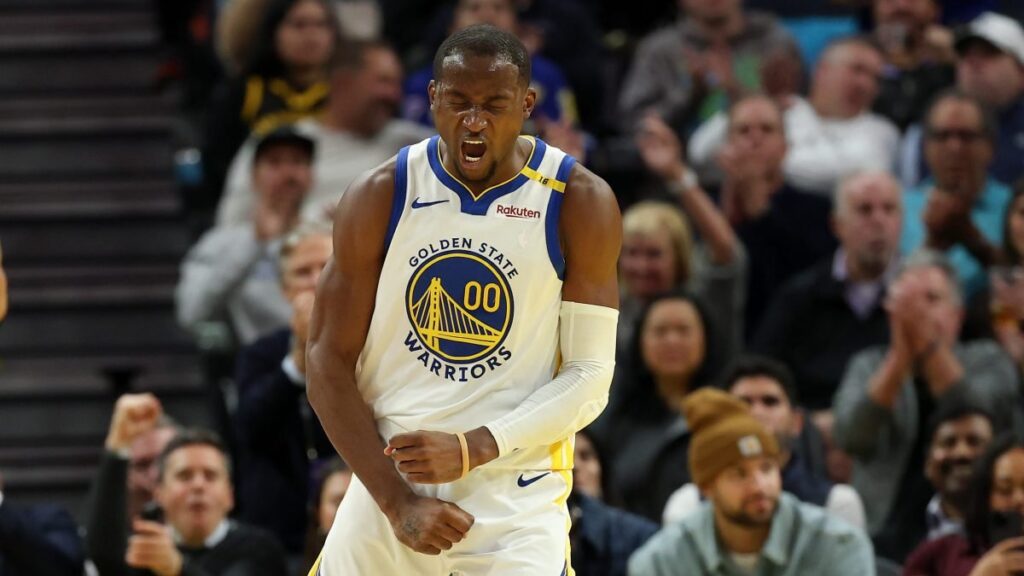The longest, driest summer in Golden State Warriors history ended Tuesday, eight days into autumn.
It took 92 days for the Warriors and Jonathan Kuminga to find conditions that will allow both sides to unclench their fists, shake hands and exchange smiles. The negotiations that dragged on since June, really, ended in the only place they could, with both parties making compromises with which they coexist.
Kuminga gets exponentially more money, $48.5 million over the next two seasons, than he would have with the $8 million qualifying offer. Bigger paychecks than he’s ever known. The 22-year-old forward could explore the unrestricted free agent market in 2027, if not sooner.
Kuminga does not get the starting role he covets, nor the ability to veto any trade that would have been in place had he signed the qualifying offer. He also will not get the 30 or so minutes per night he expected elsewhere.
Recognizing the urgency of the moment, Kuminga’s agent, the cheeky Aaron Turner, shaved away some of their requests for the sake of conclusion.
The Warriors, by keeping the team option, retained the flexibility they wanted most. By dodging the NBA’s qualifying offer quicksand, they get the substantial salary slot that aids in building future rosters. They also avoid the egg that would have been on the faces of the front office next July had Kuminga bolted as an unrestricted free agent.
General manager Mike Dunleavy and CEO Joe Lacob can take satisfaction in knowing they are in position to get a return on their investment.
By never flinching on the team option, there also is the possibility – or probability – they could move Kuminga during the three-week window between Jan. 15 and the NBA trade deadline set for noon on Feb. 5, 2026.
What the Warriors do not get is a full summer they lost. The one with the simplified roster and the peace of mind that would have come with the clean break they sought in July, when it quickly became clear they were willing to part with Kuminga.
Most significant, given that this agreement comes one day into training camp, is that the Warriors on Wednesday can fill a roster that on Tuesday was the thinnest in the NBA.
Players camped in the waiting room for almost three months – Seth Curry, Al Horford and De’Anthony Melton – finally can sign contracts that completed months ago.
Horford is set to receive a two-year contract that begins at Golden State’s $5.7 million taxpayer midlevel exception. That’s a lock, and he’s scheduled to participate in practice Wednesday.
The situation with Seth Curry and Melton is a bit cloudy. Both will sign veteran-minimum deals with relatively light cap hits. But salary cap reasons – and the looming second apron – will prevent the Warriors from adding both immediately. One will come aboard as the 15th man, as early as Nov. 12.
The Warriors could sign Melton immediately, but he still is in the late stages of rehabilitating from ACL surgery last December. That comes with risk, as he might not be cleared until November or later.
Or they could sign Curry. That seems the more logical route, as he is fully healthy and can take the floor immediately.
By mid-November, coach Steve Kerr could have the roster he and Dunleavy in July sold to veteran leaders Stephen Curry, Jimmy Butler III and Draymond Green. Horford is projected to start at center. Once Melton is fully cleared, he’ll compete to start in the backcourt alongside Stephen Curry.
Should Melton regain the starting role he lost due to injury last season, Golden State projects to have a formidable bench: Seth Curry, Buddy Hield, Trayce Jackson-Davis, Moses Moody, Gary Payton II, Brandin Podziemski, Quinten Post and, of course, Kuminga.
Would such a roster, considering the cutthroat competition within the Western Conference, be strong enough avoid the NBA play-in tournament by snagging one of the top six playoff seeds?
The answer is rife with “ifs.”
The Warriors have a chance, if:
- Stephen Curry, who averaged 72 games over the past two seasons, stays healthy enough to exceed that figure. He turns 38 next March.
- Butler, who has not appeared in more than 65 games since 2018-19, can exceed that figure. He turned 36 this month.
- Green, who has not appeared in 70 games only once since 2017-18, can exceed that figure. He turns 36 next March.
- Horford, who averaged roughly 64 games over the past four seasons, can exceed that figure – while averaging 24-28 minutes per game.
- Melton can regain the mojo he displayed last November and average 24-26 minutes over 65 games.
The Warriors now know who they have, and at least an idea of what they can become when healthy. If Kuminga plays at a level commensurate to his contract, they should be able to compete with any team in the league.
Download and follow the Dubs Talk Podcast
Read the full article here

